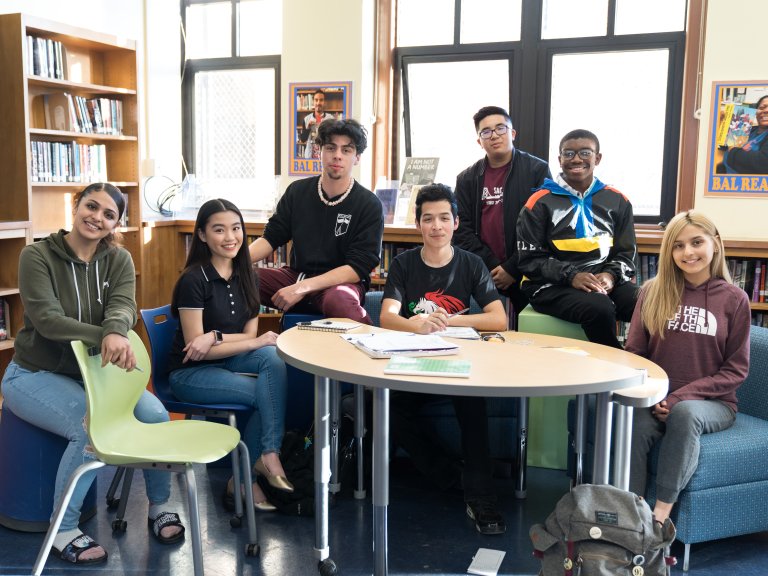Join Us: Events and Initiatives to Save Temecula Schools
Join Us: Events and Initiatives to Save Temecula Schools
Blog Article
The Influence of School Environments on Academic Success and Personal Wellness
The college setting substantially affects both scholastic success and personal well-being, encompassing aspects such as physical format, classroom atmosphere, and social characteristics. The design of academic rooms, consisting of all-natural lighting and ergonomic furniture, can boost trainees' concentration and comfort. The high quality of teacher-student connections and the nature of peer interactions play crucial roles in cultivating an environment helpful to learning and emotional support. Understanding exactly how these different factors interplay to shape trainee outcomes raises essential inquiries concerning optimizing academic settings for alternative development. How can schools tactically improve these facets to better sustain their students?
Physical Layout and Design
How does the physical format and layout of a school effect academic success? The setup and visual of a school atmosphere can considerably influence trainees' understanding results.
All-natural lighting and reliable air flow systems are pivotal in boosting cognitive function and lowering absenteeism. Researches have shown that class with adequate natural light improve trainee concentration and decrease sensations of sleepiness. In addition, ergonomic furnishings tailored to students' requirements can prevent physical pain, permitting prolonged emphasis and involvement in scholastic tasks.
Accessibility to exterior spaces and aesthetically pleasing surroundings likewise play a crucial duty - Save Temecula Schools. Green rooms and well-kept institution premises provide chances for physical workout and mental relaxation, both of which are necessary for preserving high degrees of academic performance. Essentially, an attentively designed physical environment can serve as a catalyst for academic excellence, promoting an environment that supports both training and discovering
Classroom Atmosphere
A positive classroom ambience is basic to achieving scholastic success. An environment that promotes a sense of safety, inclusivity, and mutual respect urges students to engage even more actively in their understanding processes. The setting of a classroom, consisting of aspects such as illumination, sound degrees, and seating arrangements, can significantly affect student concentration and inspiration. A well-ventilated, well-lit class with minimal diversions can enhance cognitive feature and lower stress and anxiety, thus promoting better academic outcomes.
Furthermore, the class environment need to sustain a culture of partnership and open interaction. When trainees feel comfy revealing their concepts and asking concerns, they are more probable to involve deeply with the material and create essential assuming abilities - Save Temecula Schools. Peer interactions and team activities can boost knowing by promoting and supplying varied perspectives synergy
Additionally, developing regular regimens and clear expectations can produce an organized setting that permits students to concentrate on their research studies. By lessening unpredictability and giving a predictable structure, pupils can much better manage their time and responsibilities. Ultimately, a favorable classroom ambience not only enhances scholastic performance but likewise adds to the overall wellness of trainees, preparing them for future instructional and personal undertakings.
Teacher-Student Relationships
Building on the relevance of a favorable classroom atmosphere, the connections in between pupils and teachers play a critical duty fit scholastic success. A healthy and balanced teacher-student connection cultivates a learning setting where students really feel valued, recognized, and sustained, which dramatically boosts their inspiration and engagement. When students regard their teachers as empathetic and approachable, they are more probable to participate actively in course and seek help when required, adding to a much deeper understanding of the topic.

Effective communication is vital to nurturing these relationships. Teachers that utilize open, respectful, and consistent communication produce a foundation of count on. This count on enables trainees to express their concerns and ideas easily, fostering a collective discovering environment. Essentially, solid teacher-student connections are a keystone of academic success, playing a vital duty in both scholastic success and individual advancement.
Peer Interactions
Peer interactions substantially affect academic success by forming a student's social and cognitive development. Positive peer interactions can boost a pupil's motivation and involvement in academic tasks via collaborative discovering and shared support.

Reliable peer interactions also add to the development of vital life skills, such as cooperation, conflict, and communication resolution. These social competencies are vital for both scholastic success and individual wellness, highlighting the significance of promoting positive peer dynamics within the institution atmosphere.
Extracurricular Activities
Involving in extracurricular activities plays a crucial duty in a pupil's academic success and individual growth. Research study constantly shows that students who learn this here now participate in extracurricular tasks often tend to accomplish greater academic performance.
Furthermore, extracurricular involvement cultivates a feeling of belonging and area, which is vital for personal well-being. Taking part in group tasks permits students to develop and strengthen social networks, boosting their social and emotional intelligence. These interactions are critical for developing interpersonal skills that are valuable in both academic and future specialist settings.
Furthermore, after-school activities offer a positive outlet for students to explore their rate of interests and passions past the basic curriculum. This exploration can cause the exploration of brand-new abilities and potential career courses, further inspiring trainees to involve more deeply in their scholastic work. In conclusion, the function of extracurricular activities expands past simple recreation; they are indispensable to fostering a holistic instructional experience that advertises both academic explanation success and personal development.
Conclusion
Thoughtfully made physical layouts and classrooms, along with positive teacher-student partnerships and constructive peer communications, substantially enhance student motivation and engagement. These elements jointly underscore the relevance of producing and preserving optimal institution atmospheres for the benefit of students' individual and scholastic growth.
Eventually, a favorable class environment not only boosts academic efficiency however additionally contributes to the overall wellness of pupils, preparing them for future instructional and personal undertakings.

Report this page